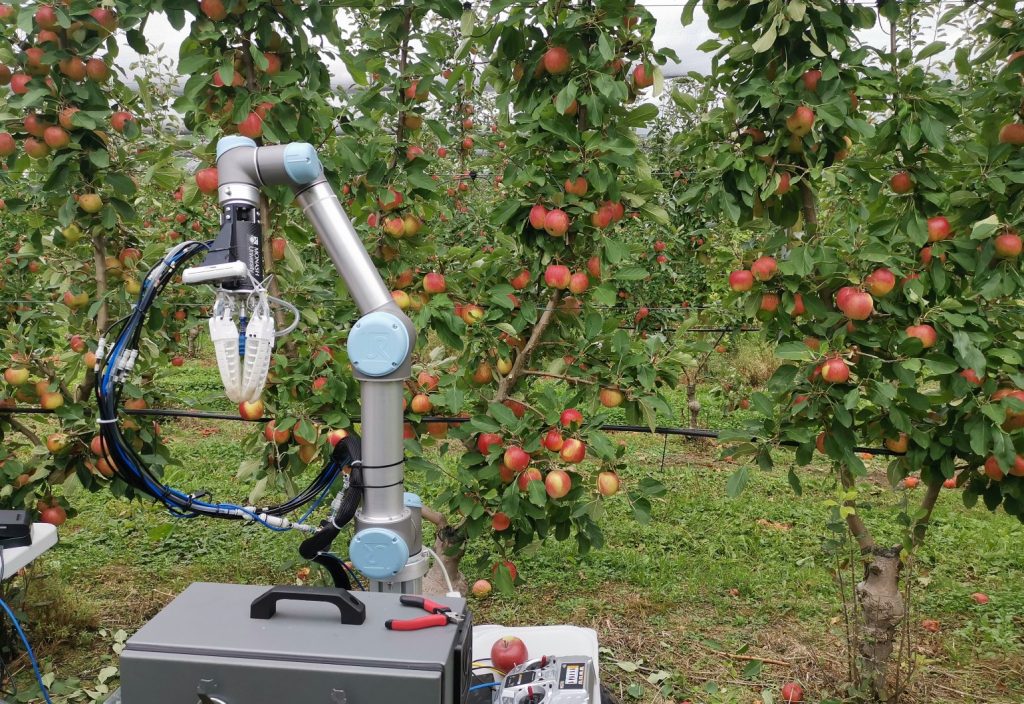Engineers from Monash University have developed a robot capable of autonomous apple picking that could help fill the labour gap caused by international border closures.
The robot can identify, pick and deposit an apple in as little as seven seconds and, down the line, could provide a solution to labour shortages in the agricultural sector.
With borders still closed due to COVID-19, Australia’s fruit and vegetable farmers are facing a shortfall of 26,000 workers and incentives from federal and state governments are yet to entice enough workers to fill the gap.
Dr Chao Chen, from the Department of Mechanical and Aerospace Engineering at Monash University, who led the team behind the robot, said he was excited to see it come to life after about three years’ work.
“There has been an increased demand for automation in Australia,” he told create. “Now, with the shortage of backpackers at the moment, there is an opportunity to use technology to fulfill that need.”
Seeing and touching
For many years, human apple pickers have had the advantage over robots due to the simple fact that they can see what they’re picking. To develop an apple picking robot, it had to be able to identify apples from the leaves and branches around it.
“The robot has a RGB-D camera which takes photos of the tree. It then uses deep learning to detect the apples and their location on the tree,” Chen said.
“After the detection, the robot finds the best path to approach the apple to pick it.”
According to Chen, the robot can correctly identify more than 90 per cent of the apples within its view in less than 200 milliseconds. It can also work in different lighting conditions.
“It actually works better at night,” Chen said, “so even though it’s slightly slower than a human, it makes up for the time difference by being more versatile.”
A human can pick an apple every four to five seconds, while the robot takes roughly seven to ten seconds.
Once the robot locates its target, it moves its arm towards it and picks it with a soft gripper equipped with a suction cup.
“The system receives the information and identifies the optimal sequence to harvest the apple. The path is planned accordingly to harvest the apples from the tree and drop them into a collection box,” Chen said.
The choice of soft fingers for the gripper means the robot won’t damage the tree or the apple during the process. The suction system within the ‘palm’ of the gripper allows the robot to pull the apple away from the tree, further minimising the potential damage to it.
Part of the robot’s success has been its ability to keep the apple’s stem intact when picking the fruit, which is a cosmetic requirement of some retailers.
From fruit to vegetables
To truly assist with Australia’s labour shortage, Chen hopes to apply the robot’s skills to other fruits and possibly vegetables.
“We will need to customise the technology so it can identify things like pears or oranges, that’s probably the next step,” he said.
“Currently our robot moves and harvests from a vertical plane. To harvest vegetables from the ground is a different orientation, but we are confident our technology could be applied there.”
The team also plans to add more versatility to the robot by expanding its ability to scan a tree for any growth problems or wayward branches.
While the robot has the potential to increase the productivity of farms, Chen also hopes the use of new technology could draw younger people to the agricultural sector. As Australia’s population grows, food production is only going to become more important and there is a potential for engineers to play a greater role in the process.
